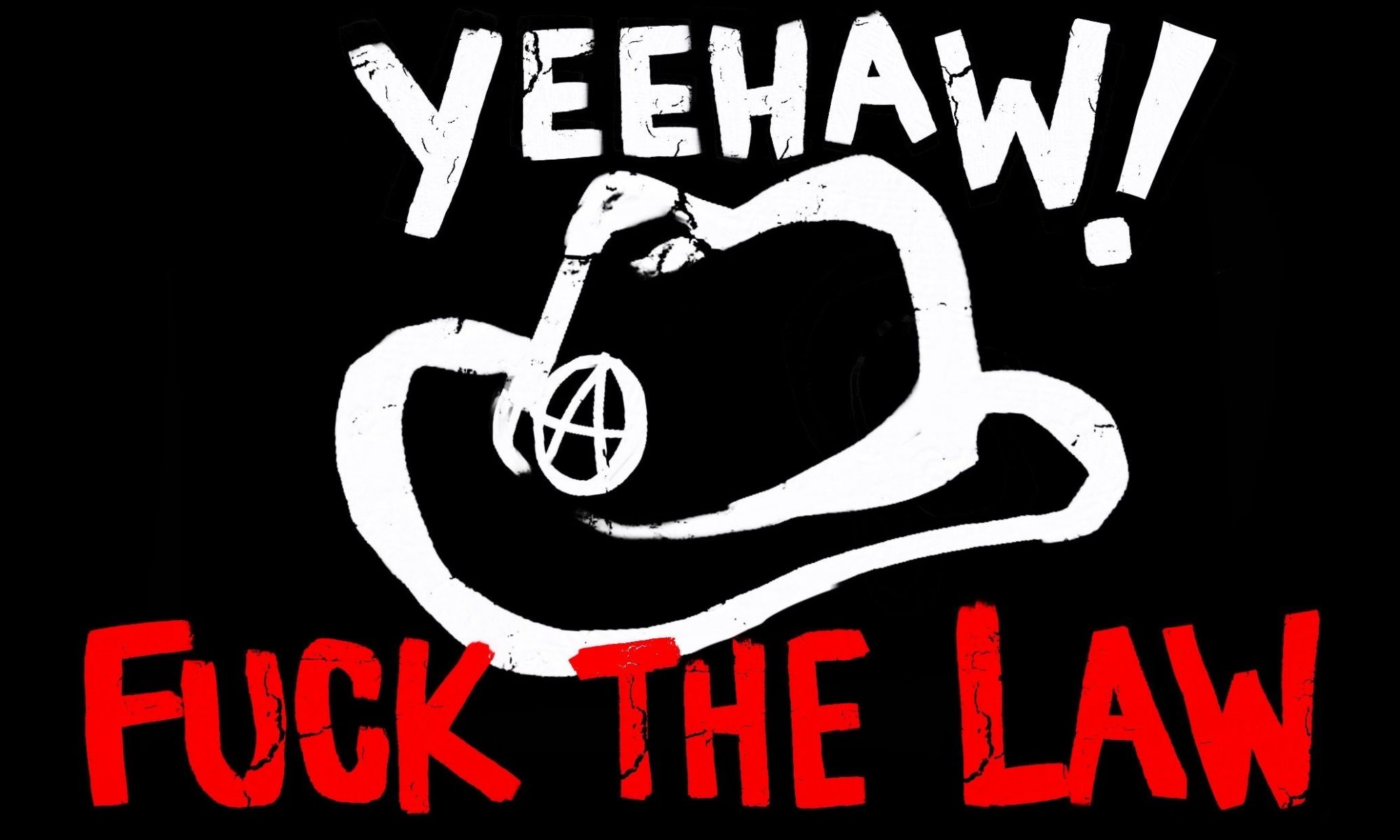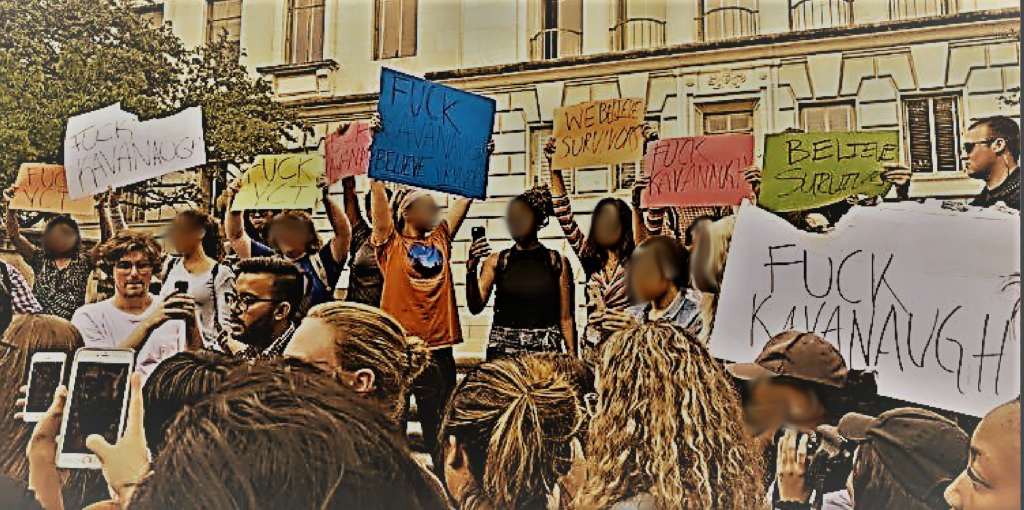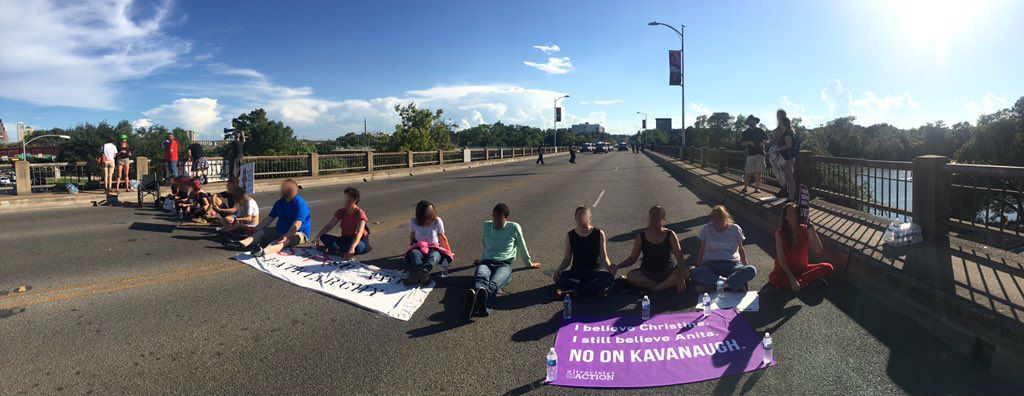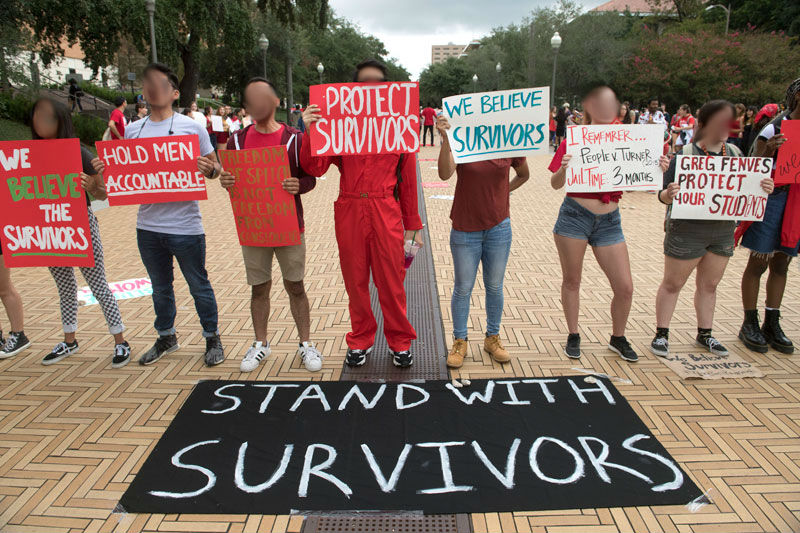Autonomous Student Media: Gestures Towards the Ungovernable
We fell behind on our news cycle since we were busy working on the YCT. Here’s a roundup of the past 2 weeks of news–a lot has happened! In this roundup, we’ve got a report on the events following the YCT demonstration, anti-Kavanaugh protests in Austin, the Stand with Survivors rally, and the inaugural Turning Point USA meeting.
CW: Sexual assault, Kavanaugh, rape apologism
Young Conservatives Agitate & Face Backlash
On October 2nd, the Young Conservatives of Texas were back on their bullshit. Two years after they were shut down by a massive counter-protest against their racist “affirmative action bake sale,” YCT members tabled on West Mall with signs displaying messages in support of the confirmation of Brett Kavanaugh, including signs reading “#MeToo Gone Too Far,” and “Kavanaugh Did Nothing Wrong.” Within two hours of starting, the YCT members were shut down and fled behind police & UT administrative protection. Overall, a maximum of 10 YCT members faced off against over 30 counterprotestors.
Intended to provoke and agitate, the YCT’s demonstration drew the ire of students–including survivors & other allies. A crowd began to form around the YCT, yelling and them and confronting them as rape apologists. A spark of militancy set off a series of escalations, as students began to tear up signs and grabbed at Joshua Lambert’s MAGA hat. Various students were pulled aside by UTPD, who proceeded to talk to them and coerced some to talk to and apologize to Dean of Students. One student who was pulled aside for allegedly ripping a sign adeptly turned that interaction into a platform to address the violence of the YCT rally and how the police & administration were complicit. No students were arrested during these events. proceeded to take action
Over the course of two hours, students took matters into their own hands and acted in a militant manner to confront the YCT and force them to flee. Without prompting, many came to recognize the administration and police as direct obstacles to their safety and their autonomy. The administration took extra steps to protect the YCT, trying to declare the steps by the tower were only accessible for YCT members. Students ignored this and took the steps en masse, surrounding the YCT table and their handful of members. As the cowards fled behind police protection, students began chanting “Fuck 12.” With the YCT, the attention quickly turned to the administrators present as students shouted at them and confronted them for their complicity in what had just occurred. When Doug Garrard attempted to claim that his actions were not about politics, he was checked for the spineless bureaucrat he was as students made clear that the safety of survivors is an inherently political issue.
The day afterwards, the YCT hosted a speaker from Empower Texans. Following pressure from Texas Senator Paul Bettencourt and the YCT, UT guaranteed over the top protection to the YCT. Around 15 police officers, with two squads hidden near Speedway, guarded the event. Susan Buckenmeyer and Sara Kennedy from Dean of Students were present as well. When one student proceeded to disrupt the event in response to a joke about sexual assault made by one of the speakers, Sara Kennedy read a document declaring her protest illegitimate and had the student removed by police.
Currently, some students are facing disciplinary action from UT for confronting YCT.
Last week, members of ASN helped produce a profile of the YCT and its members. Use this as a resource for you, your friends, and even your professors to be aware of who is around you and your classes.
Austin Responds to Kavanaugh
On Saturday, October 6th, an impromptu rally composed of members of groups like the Austin Democratic Socialists of America, UltraViolet, and other motley crews gathered in front of City Hall in anticipation of the confirmation of Brett Kavanaugh. There, a series of speeches called on people to fight back against the patriarchal system & rape culture that made Kavanaugh’s nomination possible–yet many of these speeches ended in calls to go vote, belying a belief that our power lies at the polls. In many ways, the rally embodied a very “militant” electoral rally. The speakers included a wide range of people, from City Council candidate Danielle Skidmore to a student from a local high school which was facing its own struggles against an administration protecting a student rapist.
Around 3:30, shortly after news came that Kavanaugh had been confirmed to the Supreme Court, the protest shifted gears. Some of the organizers mentioned the need to escalate, “get arrested,” and engage in “non-violent civil disobedience.” A group of men who seemed to have volunteered prior covered their hands in blood, and a group of women received bloody hand prints on their faces. The group then marched to the North Lamar bridge, carrying banners that read “Smash the Patriarchy” and signs. Once at the bridge, the group proceeded to occupy the bridge and block traffic–despite the aggressive attempts of various drivers to push through. The action was well-timed and directed. By blocking one of the most crucial bridges for ACL traffic, they hit a core vessel of traffic in the city. Additionally, they hit at a moment when police resources were already spread in. Between the traffic and the concert, it took over an hour for the first police vehicles to arrive. An ambulance and a fire truck had arrived far before them, in response to someone who called after seeing cars try to barrel through the crowd.
Fourteen people sat on the bridge itself while other supporters lined the sidewalks on the side cheering them on. Over the course of three hours, police slowly arrived. They set up a perimeter and redirected all traffic from Lamar. After accumulating around 20-30 officers and a dozen police cars, they finally moved in as the sun was setting and arrested the blockaders. This was one of the longest, most effective bridge blockades that had occurred in years in Austin.
The protest itself was a contradictory space, as seen in the tension between the emphasis on direct action and the rhetorical injunctions to vote. Chants of “1, 2, 3, 4 / Rape is an act of war,” contrasted with liberal & nationalist chants of “Whose court? our court!” and “Whose country? Our country!” At one point during the long standoff between the blockaders and the police, someone began to sing the national anthem. There was a palpable tension between liberal nationalism’s desire for the restoration of a fictitious American ideal and the direct action–a tension that reflected the largely white makeup of the protest. One autonomous agent remarked on how this reflected the liberal uptake & pacification of radical tactics, deploying them without the politics they emerged from.
Many of those calling for direct action seemed to be fueled by a sort of exceptional urgency regarding the present political moment. The calls for action & arrests reflected a newfound interest in direct action, as well as a naivete about the strategic considerations surrounding it. Considerations about the differential vulnerability of people to police violence in case of arrest–on the basis of race, gender, or sexuality–seemed to be lacking in many of these calls, as did tactical thoughts on the value of bailing folks out for unnecessary arrests and dealing with longer term legal cases. What remains to be seen is whether this militant energy will take new forms over the coming months and years, bringing with it increased strategic wisdom, or whether those who attended the rally will fall back into simple electoral politics and reformism.
Survivors Fight Back
On Tuesday, October 9, students gathered for a rally supporting victims of sexual assault and protesting the administration’s inadequate response to student concerns about survivors’ safety on campus. The rally was organized in response to a pro-Kavanaugh demonstration held by the Young Conservatives of Texas, a far-right student group. The YCT’s display proved disruptive and triggering, preventing many student survivors of sexual assault from attending class.
The rally took place on Speedway and aimed to block the popular path taken by UT students. Speakers explained the intention was to show other students what it felt like to be disrupted and inconvenienced the way survivors on campus had been by YCT’s action and the administration’s lack of action. Signs held by students and scattered across speedway spoke of the prevalence of rape culture in the US and on UT’s campus, exhibiting the real consequences of YCT’s rhetoric: excusing sexual assault and silencing survivors. Signs ranged from “Stand With Survivors,” to “Fuck YCT,” to a banner that read “UT’s Support Is Performative.” Speakers ranging from UT students to Dolores Huerta took the stage. As they blocked Speedway, students chanted slogans ranging from “we believe survivors,” to “punch a rapist in the face,” to “1, 2, 3, 4 / Rape is an act of war!”
The police, who were asked by the organizers not to come, were present around the rally. Police cars and around ten police officers were patrolling the area around the rally, with some watching from within the McCombs building. Multiple attendees witnessed officers laughing and making jokes as survivors shared their stories. When members of the YCT showed up, like Chairman Saurabh Sharma, they stood around talking to the police and went inside the McCombs building, where they watched through the window with the officers. Besides a lone, brief moment of verbal heckling and a couple of angry students trying to push past the blockade, the rally was fairly uninterrupted.
Despite the unified message held by all participants of the rally, a palpable divide surfaced once megaphones were handed off to guest speakers. After sharing their personal accounts of abuse and assault, speakers often veered the conversation toward voting and the Beto O’Rourke campaign. This inspired objections among members of the crowd who felt the polls were no place to solve the issue of rape culture, especially not in support of a faux Hispanic, gentrifying, Zionist candidate. While voting has a much debated role among those organizing for radical change, early messages that equated “people power” solely with voting seemed to set a liberal tone for the event, one that later speeches and some of the organizers themselves pushed back on with calls for organization beyond elections. Further tensions developed amongst the crowd when members began chants that advocated more direct, violent action when taking on abusers (i.e. chants of “punch a rapist in the face.”) A back and forth of contradicting ideas of resistance passed amongst the crowd on multiple occasions, with chants flowing from radical demands for direct action to passive beliefs in the virtues of voting. Such incidents are inevitable and expected on a campus where direct action is subject to a culture of white and non-intersectional feminism, and where “activism” is controlled largely by non-profits and organs of political parties. A demonstration of this nature was fated to experience some co-optation by liberals with messages that ignore the systematic failures that lead to the protest.
For five hours, students stood through the rain–covering themselves with umbrellas and signs–and blocked speedway during passing periods. Organizations with resources for survivors, such as the SAFE Alliance, tabled. For those seeking lower intensity engagement, art & crafts and bubbles were available for people to de-stress. The latter half of the protest became a much more intense, healing space as students shared poems and stories of their trauma. Many found themselves in tears and were comforted by those around them, and the organizers encouraged all the attendees to check in on the person next to them and build connections. The rally ended with a massive ring of students chanting the Assata chant, a powerful contrast to the earlier liberalism expressed in the rally.
Despite its internal tensions, the rally was an important spectacle to have occurred on the grounds of UT. The organizers themselves called for attendees to understand that resistance starts in one’s daily life. Accountability is upheld by habitually breaking the silence that protects abusers. Standing against rape culture and abusers systemically should be supplemented by standing up to your casually misogynist friend or comrade. The organizers also urged the crowd to participate in a mass reporting of the YCT as a first step in forcing the administration and student body to acknowledge and address the threat they present to student and survivor safety. The implications of this rally and its potential for spurring longer-term autonomous survivor organizing on campus have only just started to be realized and are currently unfolding, bringing to the forefront new crews of skillful organizers and new connections.
Turning Point USA Interrupted
Overshadowed by the hi-jinks of the YCT, the new UT chapter of Turning Point USA hosted its inaugural public meeting at UT. The arrival of Turning Point USA, an organization often described as the “alt-right’s blackshirts” (a reference to Mussolini’s paramilitaries), marks a new stage in the development of the campus right. At one point during the meeting, the fire alarm forced the group to move outside. Whether intentional or a happy accident, this put the group into a more public and visible area. We’re sure to see more information on the group coming out soon. In attendance were familiar faces like Meghan Lovett, Samuel Samson, Lance Jones, and Anthony Dolcefino, as well as TPUSA field organizer Benjamin Larrabee.
After the meeting, it was announced that Charlie Kirk, founder of TPUSA, will be coming to UT for a 2 hour tabling event on October 24th.
Got a story you need to tell? Publish it with us! Send us your opinion pieces, art, zines, reviews, news, statements, report-backs, or anything else you wanna see put out in the world. We take all kinds of content, with an eye towards marginalized perspectives and news about movements & revolutionary organizations. Submit content to austinautonomedia [@] autistici [dot] org.



